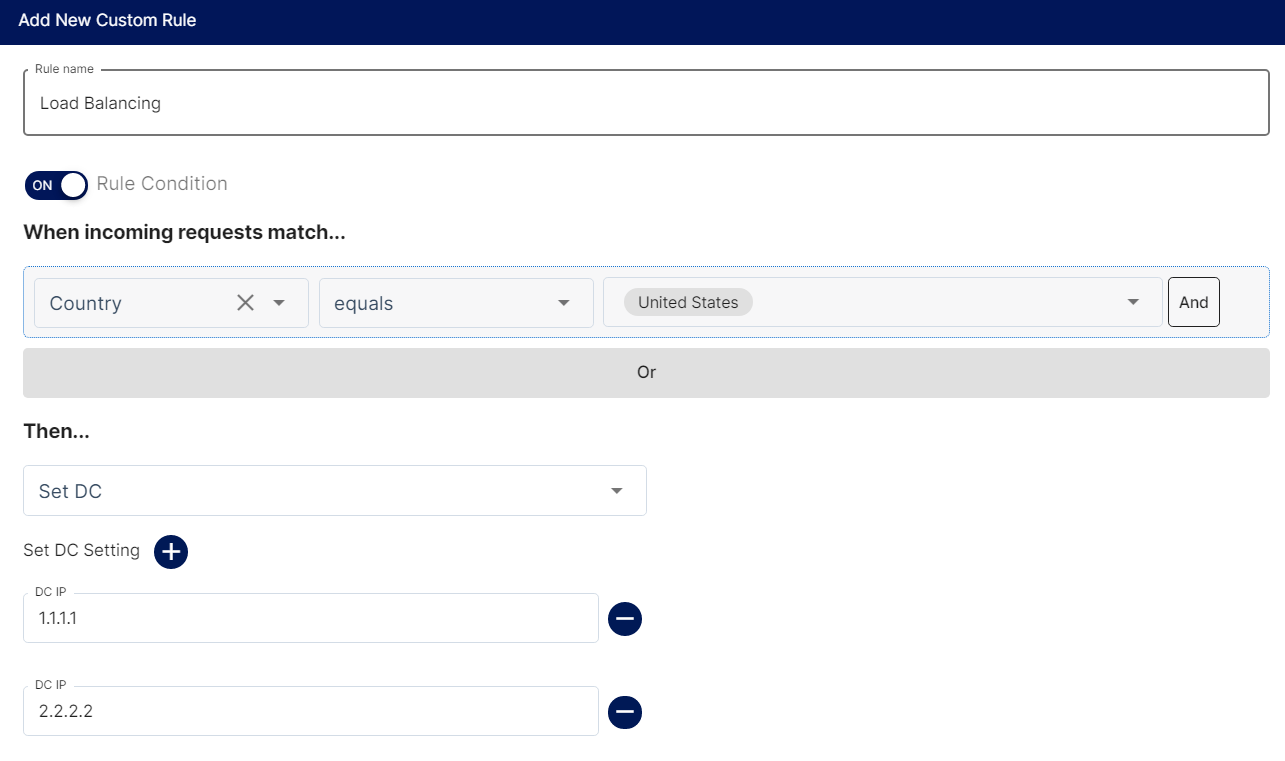Load Balancing - what is it?
Load balancing is the process of efficiently distributing network traffic between multiple servers to ensure that no single server gets overloaded and stressed at any point in time.
These are just some of the benefits of load balancing:
- Better responsiveness: Using multiple servers with load balancing ensures that no single server gets overloaded due to high demand which can result in long waiting times.
- Redundancy: It ensures that when one server fails, another server is ready to handle the site's traffic and keep it running.
- Scalability & Reduced downtime: If at any point in time maintenance tasks need to be carried out to a server, downtime is reduced because users of the site will not be affected.
Polaris offers load balancing for all customer plans; which can be easily implemented using a
custom rule under the Rules tab:

Load balancing can be implemented by adding 'DC's under the Set DC action in custom rules.
The DC IP field will contain the address of your servers you would like to use for load
balancing.
Load balancing can be implemented by default or can be customized such that it only comes into effect based on certain requests determined by the condition of the custom rule. An example is as shown above where load balancing is only implemented if an incoming request is from the United States, you might want it to be like that because you tend to receive more requests from the United States than anywhere else.
To find out more about custom rules and implement effective load balancing, check out this article: Custom Rules.